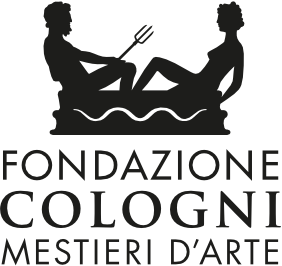Artisan talent and creative design
For this edition of Doppia Firma, fifteen designers from all over the world have allowed themselves to be led into the territories of the ancient Sforza duchy to embark on joint ventures with artisans who represent this rare, silent yet magnetic world: that of the urban artisans who are guardians of secrets that change without ever losing their aura. Like the aura that Serapian infuses into its mosaic leather pieces, crafted using the Milanese maison’s exclusive technique which Cristina Celestino (who collaborated with Serapian) has harnessed to create a seat redolent of a fine handbag, but also of the solid reliability of an upholstered furnishing. Precious, inlaid leather also features for Lebanese artist Nada Debs, who has created an innovative panel that transforms into a bench with Artèpura.
The dreamy purism of Japanese designer Nendo combined in a game of intelligence with ceramist Tonino Negri to create an evocative and timeless chessboard. Jean Servais Somian and Ahmed Angawi took on the silk-like polished woods of Giordano Viganò and Fratelli Boffi. Metalwork, the flagship of Renaissance Milan, plays a starring role: the visionary flamboyancy of Studio Job and Chris Fusaro has allowed silver produced in historic foundries such as Ganci and Miracoli to flourish and spread its wings. Marcel Wanders illuminated the brass pieces produced by Ambrogio Carati, while Natalia Criado reflected on the metallic tensions of Fucina di Efesto, while Marco Campardo mirrored himself in the refined patinas of Fonderia Battaglia.
The transparency of glass and many-coloured splendour have been interpreted by France’s Materra-Matang (with Soffieria Villa) and Agostino Iacurci (with Rosetta, a polychrome stained glass specialist). The refined balance struck by Elliott Barnes meets the mastery of fashion upholsterer Pietro Virzi; and fashion has also become the protagonist of embroideries created by Atelier Pino Grasso, which have been used for a ceramic lamp created by Elisa Uberti.
Ceramic is also the artform of choice for Anita Cerrato, but in the fractured, restored shape of urushi lacquer and the Kintsugi technique, for Ludovica Serafini+Roberto Palomba’s design. All are special, significant works, ‘goods’ in the proper sense of the word in which the value of hand-crafting showcases the crucial nature of artisan talent, and the dialogue with the design creativity for which Milan is justly famous.


